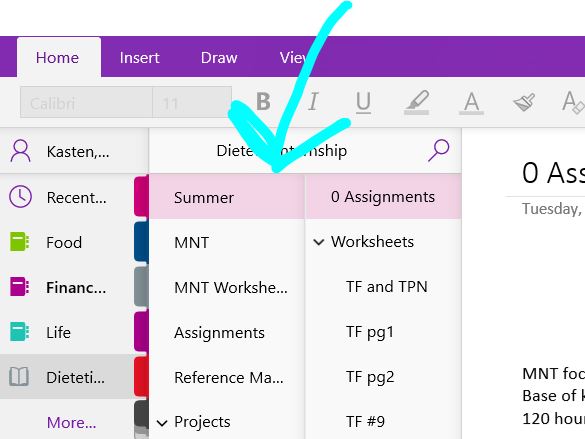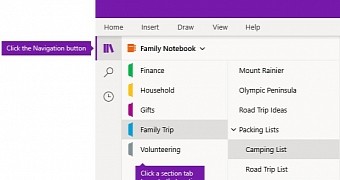Rearrange OneNote 2016 so pages pane and sections are visible on left. This post illustrates how you can accomplish adding sections to the left pane, and moving the pages pane from the right-hand side to the left as seen above. Hi LDEVM, In the current version i.e. Dvr mini u8 software download. 15.33, unchecking 'New Navigation' will turn off the new navigation layout.Since you have the insider version, I tested on the same version and it seems like switching off the experimental features will not bring back the old layout with section tabs. I did this on the advice of two colleagues who use Onenote regularly, and who actually work for Microsoft (as employees, not vendors). Both of them state that they use tabs across the top and they believe it is only the Apple version that was changed permanently.
Home > Articles
␡- Understanding OneNote's Structure

This chapter is from the book
This chapter is from the book
In this chapter
Learning the various components of OneNote's structure and how you can use them
Taking your first note on a OneNote page Lata mangeshkar hit songs free download mp3 zip file.
Just like this book is made up of parts, chapters, sections, and pages, OneNote is made up of sections as well. You can have multiple folders within your OneNote notebook. There are folders that contain sections, sections that contain pages, and pages that contain note containers.
Understanding OneNote's Structure
Microsoft OneNote contains a variety of different structures to help you organize your note-taking experience. Much like one of those spiral-bound divided notebooks you might have purchased in high school or college, each OneNote notebook contains folders, sections, and pages. Within those pages, you can have an almost infinite number of note containers that contain the text or Tablet PC ink you've stored within the program.
Much like the other programs in Microsoft Office, OneNote stores information in distinct files. These files are stored in the Windows File System as files with the extension .one. Each .one file represents a distinct section within one of your notebooks. Before we go any further discussing OneNote's structure, refer to Figure 3.1 to get a feel for what sorts of information the different types of OneNote objects can hold. A typical OneNote window is shown with two folders, some sections, pages, and note containers.
Figure 3.1 A typical OneNote window has tabs for each notebook section and folder across the top.
Using Sections to Store Related Information

Each of the tabs without a file folder icon (such as Doodles, DB Training, and Side Notes) represents a notebook section that's currently open in OneNote. You can have as many notebook sections as you want within OneNote, however, as you add notebook sections, you could end up with so many that the section names are compressed across the top of the screen. In that case, it might be helpful to close some sections for ease of navigation. You can close any open section at any time to remove it from display. When you open OneNote, it remembers which sections were open when the application was closed and only opens those sections (see Chapter 6, 'Working with Note Files,' for more information on opening and closing notebook sections).
In Figure 3.1, General, Databases, Training, Side Notes, and Meetings are all notebook sections. The tab for Upgrading actually represents an additional folder. You can tell it represents a new folder rather than a new section because it has an icon of a file folder. When you click on the tab for the additional folder, OneNote makes that the active folder and displays that folder's sections across the top of the page. The sections available in the previous folder are hidden.
In order to view them again, click the icon of the File Folder with the green arrow on it to display OneNote's structure as shown in Figure 3.2.
Figure 3.2 Use this navigation window to switch between folders and sections.
From OneNote's navigation window, you can select any currently open folder or section. You cannot use this dialog to switch to a closed section or folder.
How Do I Get Tabs On Top Of Onenote
Creating and Using Multiple Folders
Onenote Tabs Across The Top

How To Put Onenote Tabs On Top
You can have multiple folders within OneNote to help you organize information. For example, if you use OneNote for both business and personal projects, you can create a different folder for each. That way you're not distracted by the Christmas shopping checklist you stored in OneNote while trying to manage the database implementation project at the office.
Of course there's no strict rule that says you should always create different folders for different types of projects. You can certainly use OneNote for years and only use the default folder created during installation. However, as indicated in the following list, there are several key advantages to separating certain types of information into a new folder.
Keeping Information Separate—If you use OneNote for both business and personal projects, creating a separate folder for each can help keep your personal life personal. For example, if you're using OneNote in a business presentation, you probably don't want to show your surprise-party planning checklist to your colleagues. Download peta buta indonesia pdf.
Archiving Information—If you use OneNote extensively for all of your projects, you can compile a vast amount of information very quickly. Once a particular project is completed, simply archive the entire folder to a CD and remove it from your computer. In this case, creating a separate folder for each project can save you from hunting through all existing .one files to find the ones particular to the closed project.
Sharing Information—In any business setting, there are probably certain projects you share with others in your organization. If you create a separate folder for these projects, you can copy entire folders from your computer to a colleague's computer or create a new folder in a shared network location. While two users can't edit the same section at the same time, one can view a static version of the page while another edits the page.